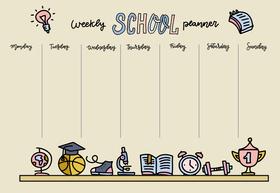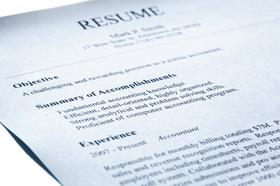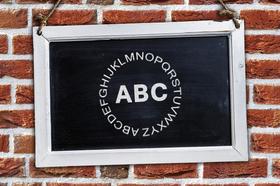What’s Being Taught? Academic Programs in Private Schools (2025 Update)
Private schools in the United States continue to distinguish themselves through rigorous academic offerings, small class sizes, and innovative programs designed to prepare students for success in college and beyond. As we enter 2025, understanding what is actually being taught in private schools is more important than ever for parents weighing educational options.
Because private schools operate independently, they are not bound by state-mandated curricula in the same way public schools are. While most meet or exceed state graduation requirements, many go further by emphasizing advanced coursework, interdisciplinary study, global perspectives, and experiential learning.
Let’s take a closer look at the academic frameworks shaping private education in 2025.
Graduation Requirements and State Benchmarks
Private schools typically align their coursework with state requirements but often exceed them. For instance, the Minnesota Department of Education requires 21.5 course credits, including four in language arts, three in math, and three in science. Many private schools surpass these minimums—offering four or more years of mathematics and science, mandatory foreign language study, and extensive arts programming.
Across the U.S., state graduation requirements have remained relatively stable, but private schools are increasingly integrating STEM, digital literacy, and global citizenship courses into their core offerings. According to the U.S. Department of Education’s 2023 report on curriculum innovation, more than 70% of independent schools now require at least one coding, data science, or technology design course before graduation.
Smaller Class Sizes, Bigger Impact
One of the hallmarks of private education remains the small class size. With average student-to-teacher ratios around 12:1, compared with 16:1 in public schools (NCES, 2024), private schools can offer individualized attention and cover more material at a deeper level.
As one New England boarding school dean put it:
“In a class of 12, every student has a voice. That kind of accountability and engagement accelerates both learning and confidence.”
This environment allows schools to go beyond minimum requirements, often exposing students to college-level material well before graduation.
College Preparation and Matriculation Trends
Parents often look to a school’s college placement record when evaluating academic quality. In 2025, most private schools proudly report strong matriculation outcomes, with graduates attending a wide range of institutions—from Ivy League universities to highly regarded liberal arts colleges.
Importantly, private schools encourage families to think beyond name recognition. As the head of a California day school noted:
“We emphasize finding the right-fit college, not just the most famous one. The success of our students depends on alignment between their strengths and the college environment.”
Families should request detailed matriculation lists and ensure the outcomes align with their child’s aspirations.
Accreditation and Quality Assurance
Accreditation remains a critical marker of school quality. Recognized agencies such as the New England Association of Schools and Colleges (NEASC) and the Western Association of Schools and Colleges (WASC) continue to hold schools accountable through rigorous reviews every five to ten years.
Accreditation ensures that academic programs, faculty qualifications, and governance meet high standards. For parents, this provides assurance that their investment in private education is backed by external oversight.
Advanced Placement (AP) and International Baccalaureate (IB)
AP and IB remain cornerstones of advanced academics in private schools. However, trends in 2025 reveal some shifts:
AP Programs: Still widely offered, but many schools are selective about which AP courses to include, prioritizing depth over quantity.
IB Programs: Increasingly popular, especially among international families, with IB Diploma graduates gaining an edge in global university admissions.
Alternatives: Some elite schools are designing their own advanced curricula, emphasizing research projects, interdisciplinary studies, and real-world applications.
According to Forbes (2024), nearly 20% of top-tier private schools have moved away from offering every AP course in favor of proprietary advanced seminars.
Expanding Academic Horizons: STEM, Arts, and Global Studies
In 2025, private schools are investing heavily in specialized programs:
STEM Innovation: Robotics labs, artificial intelligence electives, and biotechnology courses are now common.
Arts Integration: Schools emphasize creative expression, requiring arts credits beyond state minimums.
Global Education: Mandarin, Arabic, and global studies programs prepare students for an interconnected world.
Experiential Learning: Internships, research partnerships, and study-abroad opportunities are integrated into curricula.
One standout example is a Midwestern day school where seniors complete a capstone research project on topics ranging from climate change to AI ethics, often in partnership with local universities.
Tuition, Demographics, and Access in 2025
Private school tuition continues to rise, though growth has slowed compared to the early 2020s. The National Association of Independent Schools (NAIS) reports an average annual day school tuition of $28,500 and boarding tuition of $64,000 in 2024–25.
Demographics are also shifting. Independent schools report steady increases in students of color (34% nationwide) and international students (11%), reflecting efforts to diversify student bodies.
At the same time, financial aid budgets have expanded, with the average school dedicating 15–20% of operating budgets to scholarships, making access more feasible for middle-income families.
Choosing the Right Curriculum Fit
Ultimately, determining what is being taught should be central to your school search. Parents should ask:
Does the school exceed state minimums in meaningful ways?
Are advanced courses (AP, IB, or equivalent) available and well-supported?
What unique programs—such as STEM labs, language immersion, or capstone projects—set the school apart?
Does the college matriculation record reflect a broad range of successful placements?
Visiting schools, reviewing course catalogs, and meeting with academic leaders are essential steps in the decision-making process.
For more guidance, see our checklist for comparing curricula on Private School Review.
Final Thoughts
Private schools in 2025 continue to distinguish themselves through rigorous academics, innovative programming, and strong college outcomes. While state requirements establish a baseline, most private schools go further, offering depth, personalization, and opportunities not typically available in public settings.
For families, the key is finding the school whose curriculum aligns with their child’s strengths, goals, and passions. Education is never one-size-fits-all—and private schools are uniquely positioned to honor that truth.












